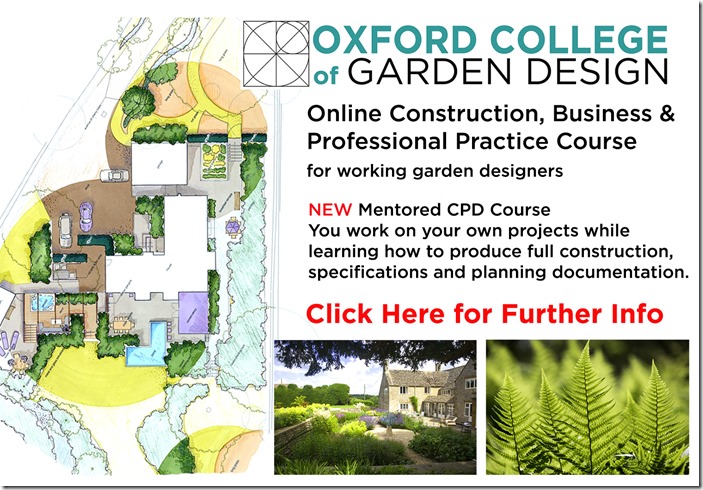
Website Design For Garden Designers Pt 2

In the first part of Website Design for landscape and garden designers, we look at your website as a digital portfolio. In this second part, we’ll look at the ‘About’ page and how to market your website
The About Page.
The About page is an opportunity to show your personality. A brief bio is helpful, just don’t get too cocky. Draft this as you might your Twitter or Instagram bio. Most are accustomed to quickly skimming these for information and they can say a lot about your character with very few words.
Text
People aren’t going to read a life history or paragraphs of text, especially online. Keep page text to around 300 words or just over, to maximise SEO. Keyword your text for legibility. Think in the Heading One, Heading Two, Heading Three style format. What’s the hierarchy of information you want people to understand?
Job Search & Recruitment
If you’re a student, or you’re seeking an internship, you should list a range of relevant skills. Be sure, if you list it a skill, that you can honestly stand behind your competency. Link a PDF of your CV or your resume. Also, include links to your social profiles somewhere on this page: LinkedIn, Twitter, Instagram, Facebook etc. People can click as they want or need more information. And, don’t forget to include your preferred contact details and make sure it’s a professional email address, not something like bigboy@hotmail.com.
Key Skills
Do You Blog? Have you published anything? Have you given any public presentations? Are you a social media influencer or expert? Tell me about your online marketing skills. Do you know anything about e-mail list development using Constant Contact, AWeber, or MailChimp?
CAD Skills
In the UK most landscape and garden designers use VectorWorks. Having said this, if you know one CAD program, chances are you can learn any CAD program. How about digital modeling and rendering? Do you know SketchUp, 3DSMax, Rhino, Lumion, etc? Present the skills you want to be hired for.
Hobbies
If a hobby is a creative outlet for you, thread examples into your portfolio gallery rather than sharing it as a separate interest out of context.
Website Design, SEO & Meta Skills
If you build your portfolio like this as a stand-alone website perhaps the most useful by-products to you are the meta-skills you’ll learn by doing it. These confer a real competitive advantage to you as an applicant. If you know something about website design, the chances are good you’ll have the basics to update nearly any website out there.
Page Optimisation
Sear Engine Optimisation or SEO for short is a bit of a black art but is vital if you want your page to rank on the first page of google. Wix.com has its own built in search engine optimisation (SEO) called Wix SEO Wiz. If you use a web designer, you may need to employ a separate specialist firm to optimise your site on completion.
Optimise For Your Local Area
My advice is to optimise your website design to your nearest town/local area, rather than trying to compete for national/international terms like ‘garden designer or landscape design’ For example ‘Your Name’ garden design – Oxford. This way you will be only competing for front page space with maybe 10 other designers, rather than several thousand. If in doubt, seek professional help
Pay Per Click (PPC)
Pay per click allows you to pay to appear on the top page of Google and may be worth considering. Again keep it local and use specific search terms like ‘front yard design – San Francisco’ or ‘courtyard garden design – Kensington London’ to keep costs down. Google AdWords Team will help set this up for you or you use a specialist firm to help set this up and be aware that budgets can quickly spiral.
Website Design for Google Ranking
Keeping your website regularly updated will also help with SEO. If you’re familiar with blogging, it also means you probably know something about writing, and you probably have a sense for what it takes to visually and verbally communicate your ideas. It means you understand something about SEO and search rankings and marketing. These are meta-skills that transfer to every possible vocation you might consider in the future.
Without a website, you might as well not exist. But, just having one doesn’t guarantee you’ll be discovered. The metadata you include in your site is as important for discovery in search, as the images, you upload to your portfolio. Search engines can’t see images so they rely on the metadata appended to the image when it’s uploaded. Make sure to include metadata for every image you add to your site.
Use minimal, keyword-rich text to describe both your project pages and the images. Title each image descriptively, using the alt-text field and make sure it’s sized to load quickly. Don’t expect five-meg J-PEGs to perform very well in search because Google will penalise you. You want to optimize your images before you upload them.
Conclusion
A website is a resource you can direct as you wish, something you control. As you finish projects and make new connections you can direct everything else you don’t control online. Things like social media profiles and email lists toward that asset and you can use it to your benefit. It’s easy to update and the metadata associated with each update ripples through the as Google’s spiders continually crawl your site, opening it up to search traffic, referrals, and new opportunities.
For further information on website design for landscape and garden designers click here to download our student notes


